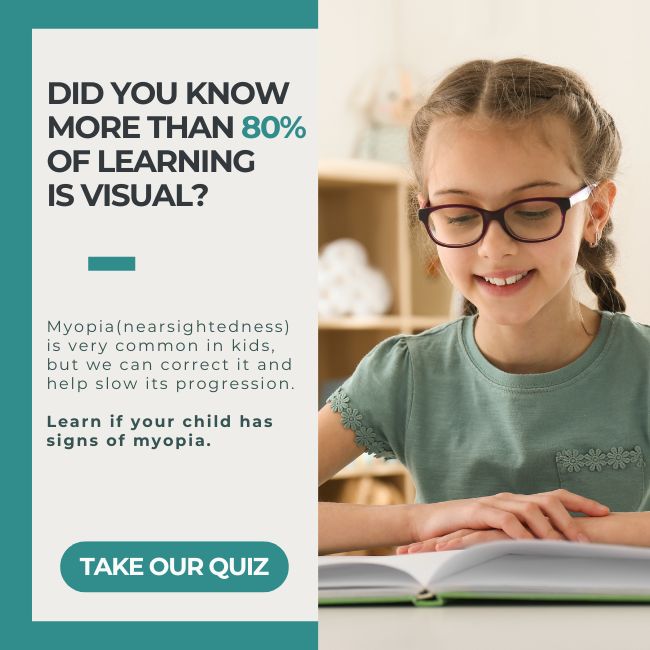Vision is one of our most precious senses. But that doesn’t mean our eyes will always be perfect. There are plenty of eye conditions like glaucoma that can lead to long-term vision loss if you don’t seek the help of an eye care professional.
So how do you tell if you’re dealing with an eye condition? Can your optometrist diagnose glaucoma?
Your optometrist can diagnose glaucoma during a regular comprehensive eye exam. They’ll be checking all the different parts of your eye to look for signs of problems like glaucoma. If they believe you’re at risk of developing glaucoma, they’ll recommend an appropriate approach to treatment.
What Is Glaucoma?
Glaucoma isn’t just one condition—it’s actually a group of different conditions that can affect the eye. It’s characterized by a buildup of intraocular pressure, the fluid pressure of the eye.
Inside your eye, you have a complex system. Fluid enters to bring the eye different vitamins and nutrients, the essential building blocks it needs to stay healthy. Then, this fluid eventually exits through a drainage system. It’s almost like a plumbing system—fluid enters and eventually leaves. This helps maintain your eye’s internal pressure.
But what happens if the fluid doesn’t leave, or the exit is partially obstructed? The internal pressure in the eye can start to build. Eventually, this can start to damage the optic nerve. If it’s left unaddressed, untreated, or undiagnosed for too long, glaucoma can start to put more and more pressure on the optic nerve, eventually leading to permanent vision loss.
However, there’s a bit of a problem. Glaucoma often progresses without any clear symptoms. Because of this, it’s often referred to as “the silent thief of sight.“
Are There Different Types of Glaucoma?
There are several types of glaucoma, each with its own set of causes and symptoms. The most common types of glaucoma include:
- Open-angle glaucoma
- Angle-closure glaucoma
- Secondary glaucoma
- Congenital glaucoma
Open-Angle Glaucoma
Open-angle glaucoma is the most common type of glaucoma. It develops when the eye’s natural drainage system becomes clogged over time. When open-angle glaucoma develops, there’s no obvious or sudden buildup of pressure inside the eye. Instead, it develops slowly, often going unnoticed for quite some time.
Angle-Closure Glaucoma
Angle-closure glaucoma, also called closed-angle or narrow-angle glaucoma, is much less common, but also much more serious.
This type of glaucoma develops when the drainage canal in the eye becomes abruptly blocked. This can occur when the iris isn’t as open as it should be, clumping over the drainage canal and leading to a sudden, and sometimes painful, increase in eye pressure.
This is considered a medical emergency. If you believe you may be at risk of developing glaucoma, keep an eye out for the following symptoms:
- Sudden blurry vision
- Severe eye pain
- Sudden halos around lights
- Visible redness appearing spontaneously
- Headache
- Sudden nausea or vomiting
If you experience any of these symptoms, immediately seek medical help.
Secondary Glaucoma
Secondary glaucoma is a type that develops due to a side effect of a different medical condition. These can include:
- Recent trauma to the eye
- A severe eye infection
- Severe inflammation
- Tumours
Congenital Glaucoma
Congenital glaucoma is a rare disorder. This type develops in infants, often noticed within a child’s first few months. It’s the result of an incorrect or incomplete development in the eye’s natural drainage system.
How Is Glaucoma Diagnosed?
Because glaucoma doesn’t show symptoms in its earliest stages, it’s essential to catch glaucoma early. To do this, it helps to schedule regular comprehensive eye exams with your optometrist.
During these exams, your optometrist can perform all kinds of different tests designed to catch conditions like glaucoma. For glaucoma, they’ll likely perform the following tests:
- Tonometry. This measures the pressure inside your eye, known as intraocular pressure (IOP). Elevated IOP may indicate the presence of glaucoma, though not always.
- Ophthalmoscopy. The doctor will look at the shape and colour of the optic nerve in your eye. Any changes can signal damage to the nerve.
- Perimetry (visual field test). This test evaluates your peripheral vision to determine if you have any blind spots.
- Gonioscopy. A test to see if the angle where the iris meets the cornea is open or closed, which helps your eye doctor determine your risk for angle-closure glaucoma.
- Pachymetry. This test measures the thickness of the cornea, which can help in diagnosing a form of glaucoma known as normal-tension glaucoma.
- Optical Coherence Tomography (OCT). This provides detailed images of various parts of the eye and can help in diagnosing glaucoma by documenting the progression of damage.
At any point during your exam, feel free to ask your optometrist about the various tests and their purposes. They’ll be able to explain in depth what each test aims to do, and can answer any questions or concerns you may have!
Get Checked for Glaucoma
Glaucoma is a serious eye condition, and it can lead to long-term vision loss if you leave it unaddressed. Don’t let glaucoma cause you any lifelong problems; instead, come see our team here at Insight Eyecare. We can perform a comprehensive eye exam to determine whether or not you’re at risk of glaucoma. Book an appointment with us today!







